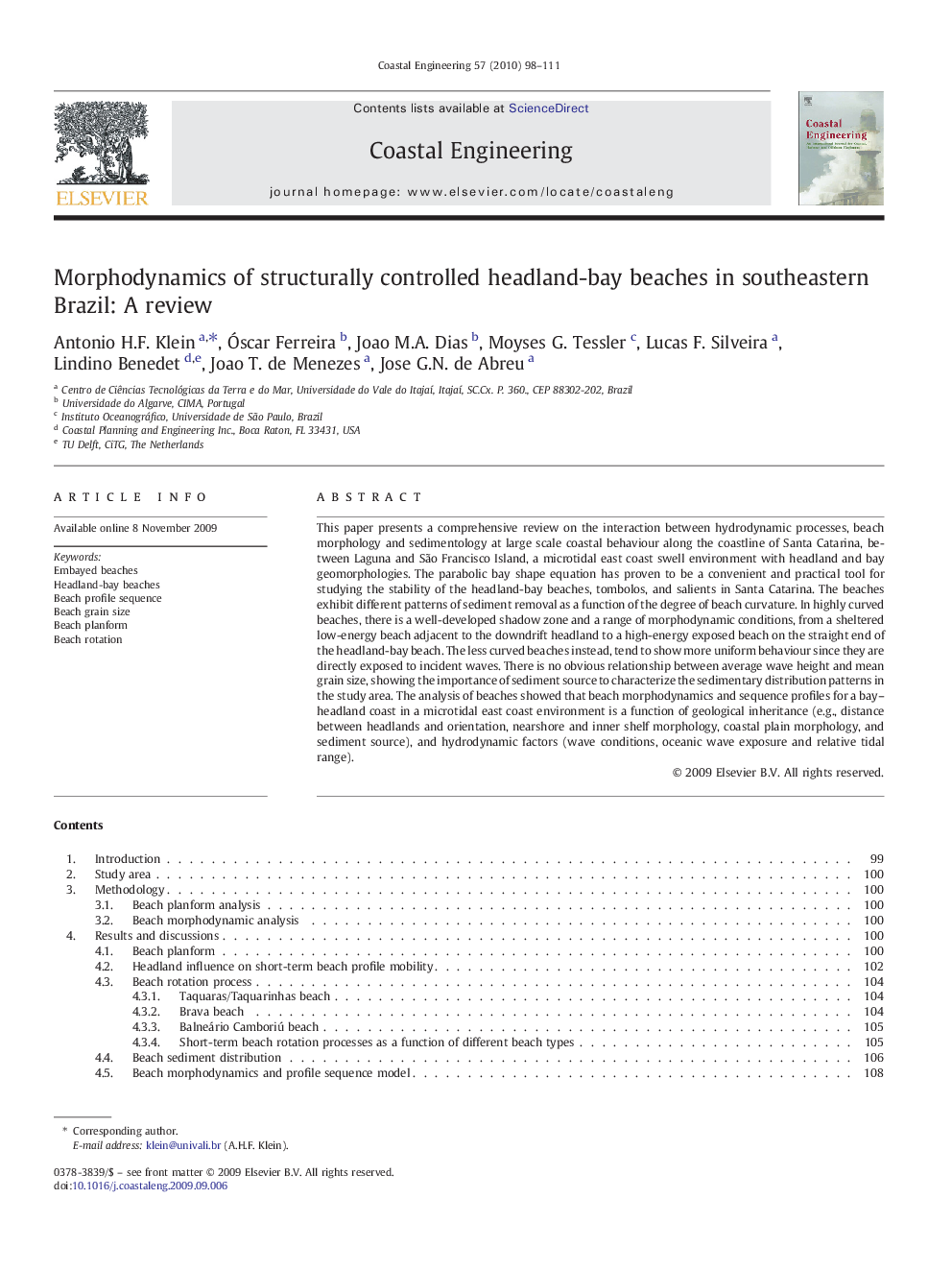| Article ID | Journal | Published Year | Pages | File Type |
|---|---|---|---|---|
| 1721204 | Coastal Engineering | 2010 | 14 Pages |
This paper presents a comprehensive review on the interaction between hydrodynamic processes, beach morphology and sedimentology at large scale coastal behaviour along the coastline of Santa Catarina, between Laguna and São Francisco Island, a microtidal east coast swell environment with headland and bay geomorphologies. The parabolic bay shape equation has proven to be a convenient and practical tool for studying the stability of the headland-bay beaches, tombolos, and salients in Santa Catarina. The beaches exhibit different patterns of sediment removal as a function of the degree of beach curvature. In highly curved beaches, there is a well-developed shadow zone and a range of morphodynamic conditions, from a sheltered low-energy beach adjacent to the downdrift headland to a high-energy exposed beach on the straight end of the headland-bay beach. The less curved beaches instead, tend to show more uniform behaviour since they are directly exposed to incident waves. There is no obvious relationship between average wave height and mean grain size, showing the importance of sediment source to characterize the sedimentary distribution patterns in the study area. The analysis of beaches showed that beach morphodynamics and sequence profiles for a bay–headland coast in a microtidal east coast environment is a function of geological inheritance (e.g., distance between headlands and orientation, nearshore and inner shelf morphology, coastal plain morphology, and sediment source), and hydrodynamic factors (wave conditions, oceanic wave exposure and relative tidal range).
